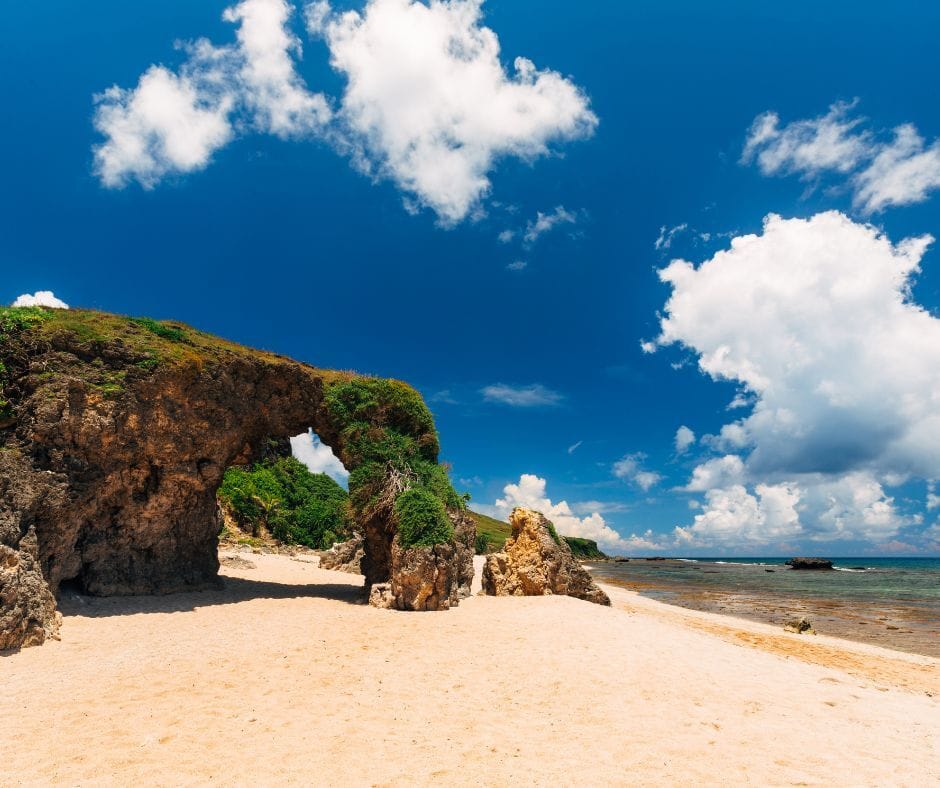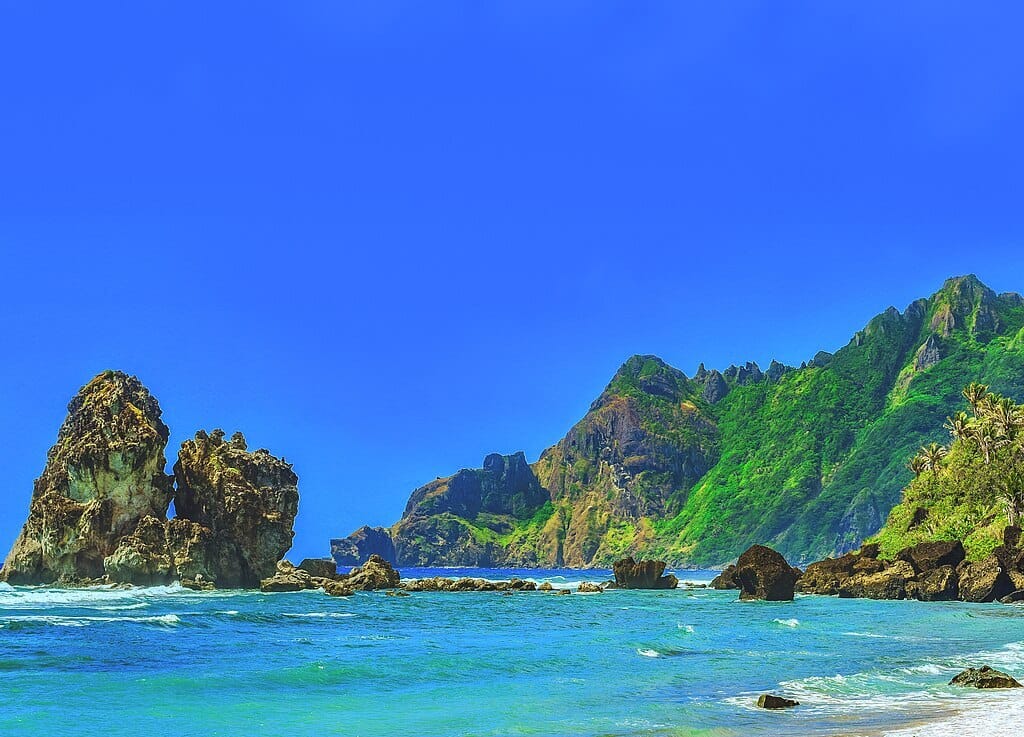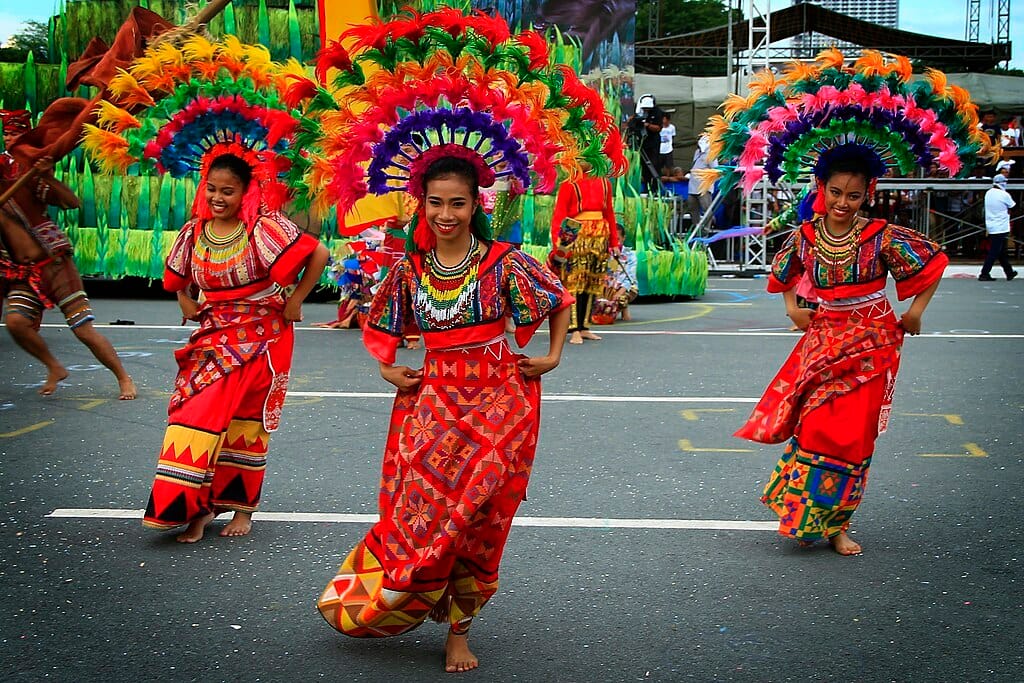- Finding Utopia Newsletter
- Posts
- Batanes Protected Landscape & Seascape — The Northernmost Natural Treasure
Batanes Protected Landscape & Seascape — The Northernmost Natural Treasure
Stories: Batanes Protected Landscape & Seascape — The Northernmost Natural Treasure; Hermosa Festival Zamboanga — A Colorful Celebration of Faith, Culture & Community; Jade Vine — The Philippines’ Rare Emerald Bloom

Hello and Mabuhay!
Welcome to Finding Utopia — your trusted guide to exploring the wonders of the Philippines and beyond.
In this edition, we bring you inspiring stories and essential travel insights to fuel your next adventure:
Batanes Protected Landscape & Seascape — The Northernmost Natural Treasure
Hermosa Festival Zamboanga — A Colorful Celebration of Faith, Culture & Community
Jade Vine — The Philippines’ Rare Emerald Bloom
Wherever you're dreaming of going next, we're here to guide you closer to your utopia.
Enjoy the read!
— The Finding Utopia Team
Batanes Protected Landscape & Seascape — The Northernmost Natural Treasure

At the tip of the Philippines, where seas meet skies and wind shapes every curve, lies Batanes—the country’s northernmost province and a living canvas of landscapes and seascapes. Designated as a Protected Landscape and Seascape, Batanes is both a sanctuary of biodiversity and a stage for human and natural harmony.
What Defines Batanes’ Protected Realm
Terrains That Tell a Story
Rolling hills, rolling seas, steep cliffs and rolling green pastures. The protected area includes both land and marine zones, preserving everything from limestone bluffs to rugged coastlines. The land and sea are deeply interconnected here—what happens in one affects the other.Seascapes Rich in Marine Life
Surrounding waters are teeming with marine species: coral gardens, fish nurseries, and migratory routes. The seascape is vital not only for ecological balance but also for local fishing communities who depend on healthy reefs and coastal ecosystems.Cultural Landscape & Built Heritage
Batanes is not just about nature—it’s also about people. The province is known for Ivatan stone houses built to resist storms, ancient paths, traditional boats (vakul, tataya), and wind-shaped terraces. Protecting the landscape also means safeguarding this cultural identity.Endemic Flora & Fauna
The island hosts plants and birds that exist nowhere else—the Batanes flower species, seabirds that nest on ridges, and grassland plants adapted to wind and salt spray. The protected status helps prevent habitat loss from development or invasive species.
Why Batanes Stands Out
Extreme Exposure, Greater Resilience
Because Batanes is exposed to Pacific winds, storms, and waves, the ecosystems and terraces here are naturally resilient. Yet these conditions also make them fragile—requiring protection and sustainable practices to prevent erosion, coral damage, and land degradation.Small-Scale, Big Impact Conservation
The relatively small human population and limited development in Batanes offer a unique advantage for conservation. Local communities are intimately tied to the land and sea—so their participation, knowledge, and stewardship are key to preserving balance.Tourism with Respect
Even as Batanes draws travelers for its raw beauty, mountain trails, and seascapes, visitor impact is carefully managed. Permits, local guides, limited infrastructure, and awareness initiatives help keep tourism from overreaching.
Tips for Visiting & Contributing
Best Time to Visit
The months of April to October offer calmer seas, clearer skies, gentler winds, and better chances for marine and land exploration.How to Travel
Travel to Batanes usually involves a flight to Basco, the provincial capital. From there, local jeepneys, trikes, or tours connect you to coastal viewpoints, lighthouses, and mountaintop trails.What to Pack
Windproof layers, sturdy shoes for uneven terrain, reef-safe sunscreen, rain gear (weather is changeable), water bottles, and a sense of respect for minimal waste.Support Local & Low Impact Travel
Stay in community guesthouses, hire local guides, buy Ivatan crafts, follow “leave no trace” rules, and avoid disturbing fragile habitats and nesting sites.
Batanes Protected Landscape & Seascape is more than a destination—it’s a breathing testament to balance, heritage, and the wild archipelago spirit. When you walk its ridges or float its shores, you step into a place where nature and culture meet in harmony—and where every visit matters.
Daily News for Curious Minds
Be the smartest person in the room by reading 1440! Dive into 1440, where 4 million Americans find their daily, fact-based news fix. We navigate through 100+ sources to deliver a comprehensive roundup from every corner of the internet – politics, global events, business, and culture, all in a quick, 5-minute newsletter. It's completely free and devoid of bias or political influence, ensuring you get the facts straight. Subscribe to 1440 today.
Hermosa Festival Zamboanga — A Colorful Celebration of Faith, Culture & Community

Every October, Zamboanga City transforms into a vivid tapestry of devotion, music, dance, and heritage during the Hermosa Festival (Fiesta Pilar). Rooted in centuries of faith and colonial tradition, this vibrant festival honors Our Lady of the Pillar while putting Zamboangueño culture on full display. Whether you're drawn by spectacle, spirituality, or local flavor, the Hermosa Festival is one of the Philippines’ richest cultural experiences.
Festival Highlights You Can’t Miss
Regatta de Zamboanga – Sailboats in Color
The coastline comes alive when vintas, traditional outrigger boats with painted sails, compete in races that celebrate Zamboanga’s maritime heritage. It’s both a competition and a parade of cultural symbolism.Street Dance Competition – Dance as Storytelling
School and barangay groups choreograph dynamic dances, weaving local legends, costumes, and music into performances that take over the city’s streets. It’s entertainment and local pride rolled into one.Parade of Lights & Grand Float Parade – Nighttime Spectacle
When the sun sets, floats decked out in lights roll through the city with intricate designs and themes that honor Zamboanga’s heritage and communities. It’s a must-see for families and photographers alike.Religious Events at Fort Pilar – Faith at the Core
Fort Pilar Shrine becomes the spiritual heart of the festival. Daily Masses, novenas, candlelight processions, and devotional gatherings draw thousands in reverence.Cultural Nights & Chavacano Showcases
Nights feature Chavacano music, folk dance, theatrical performances, and local storytelling—highlighting local language, identity, and artistic expression.Food & Delicacies – Taste Zamboanga
You can’t talk about Hermosa Festival without tasting Zamboanga’s culinary treasures:
• Curacha with Alavar sauce – local crab bathed in a spicy coconut-crab roe sauce.
• Satti – skewers with spicy sauce and sticky rice.
• Knickerbocker – Zamboanga’s variation of halo-halo with fruits, jellies, and ice cream.
• Night markets and street stalls serve grilled seafood, local snacks, rice cakes, and community flavors.
Travel & Planning Tips
When to Visit
The official festival runs fromOctober 1 to 12, with peak events like the Grand Parade and Regatta often scheduled between October 10 and 12.Getting There
By air: Zamboanga International Airport connects with Manila, Cebu, and other regional hubs. By sea: ferries from Basilan, Jolo, and Dipolog provide alternative access from Mindanao or nearby islands.Getting Around & Staying Central
Use tricycles, jeepneys, or taxis to navigate. Staying near downtown or Paseo del Mar gives easier access to festival venues. Lodging fills quickly—book at least 1–2 months ahead.Dress & Respect
Modest attire is appreciated during religious events and at Fort Pilar. Also, carry light, breathable clothes for daytime.
Safety is good overall, especially during the festival, but stay alert in crowded areas and watch your belongings.Language Tip
While English and Filipino are understood, using basic Chavacano phrases like “Gracias” or “Buen dia” is welcomed by locals.
Why the Hermosa Festival Belongs on Your Travel Map
The Hermosa Festival is more than festivity—it’s a living narrative of Zamboanga’s soul. It merges devotion, history, dance, music, and food in ways few events do. Whether you stand on a float-lined street, hear a Chavacano song, or taste curacha by candlelight, the festival invites you to connect deeply—with place and people.
Jade Vine — The Philippines’ Rare Emerald Bloom
Among the treasures hidden in Philippine rainforests, one vine stands apart in both color and mystique: the jade vine (Strongylodon macrobotrys). Sometimes called the emerald vine or turquoise jade vine, it is a botanical marvel, a fragile gem of forest ecology, and a living symbol of what remains when we dare to protect nature’s rarest works of art.
What Makes the Jade Vine Extraordinary
Unusual Color & Flower Structure
Its blooms hang in long, pendulous clusters—sometimes reaching up to three meters—of claw-shaped, vividly turquoise to jade-green flowers. The hue is almost surreal, resulting from a rare pigment combination of malvin and saponarin under alkaline cell conditions.Habitat & Endemism
The jade vine is endemic to the Philippines, thriving in damp tropical forests, typically along streams or ravines in lowland rainforest. Because of deforestation and habitat degradation, its range has contracted significantly.Pollination & Reproduction
In its wild habitat, the vine depends onbat pollinators that hover upside down to extract nectar, brushing pollen across the flowers. In cultivation, hand pollination is often necessary to mimic this process. Seed pods are rare in cultivation, making reproduction and propagation even more challenging.Growth & Cultivation Challenges
The vine can climb to 18 m in native conditions, using thick woody stems to latch onto host trees. It demands high humidity, tropical temperatures (minimum around 15 °C), and consistent moisture—conditions that limit where it can be grown. Many botanical gardens around the world treat it as a greenhouse or conservatory specimen.
Conservation & Cultural Significance
Threats from Habitat Loss
With forests cleared, streams diverted, and local ecosystems fragmented, the jade vine’s wild populations are under serious pressure. Conservationists consider it at risk of decline, making its preservation urgent.Living Collections & Botanical Work
Leading botanical gardens—such as Kew—have succeeded in propagating and maintaining jade vine specimens. Their work is key in preserving both genetic diversity and public awareness of this species.A National Emblem of Natural Beauty
In the Philippines, the jade vine is more than an exotic plant—it’s a reminder that nature holds wonders as irreplaceable as gems. Its rarity, color, and fragility make it a metaphor for what is beautiful and vulnerable in our world.
Where You Might See It & What to Remember
In Botanical Gardens & Conservatories
If you can’t reach native forests, look for jade vine exhibits in tropical gardens or conservatories around the world. Some of these inform and inspire plant lovers.Visiting Its Native Habitat
If exploring Filipino rainforest trails, one might glimpse a mature vine along shaded streambanks or within ravines, especially in protected forest reserves. But spotting it in bloom is rare and seasonal.Supporting Its Future
You can contribute by supporting forest conservation, botanical gardens, and awareness programs that protect its habitat and foster sustainable propagation.
The jade vine is a living reminder that nature’s palette holds colors we scarcely imagine—and that to protect it is to protect our capacity for wonder. May every glimpse into its blue-green cascade deepen our resolve to safeguard the green heart of the Philippines.

Smarter Marketing Starts Here
Most marketers waste money on channels that don’t actually drive results. The secret? Incrementality.
Our free ebook, Unlocking Incrementality: A Guide for Marketing Success, shows you how to measure what really moves the needle—so you can stop guessing and start scaling.
Inside, you’ll discover:
The difference between attribution and true incrementality
Proven testing methods to measure real impact
How to double down on the channels that actually work
Case studies from top brands already seeing outsized ROI
Don’t just run campaigns. Run campaigns that count.





Reply